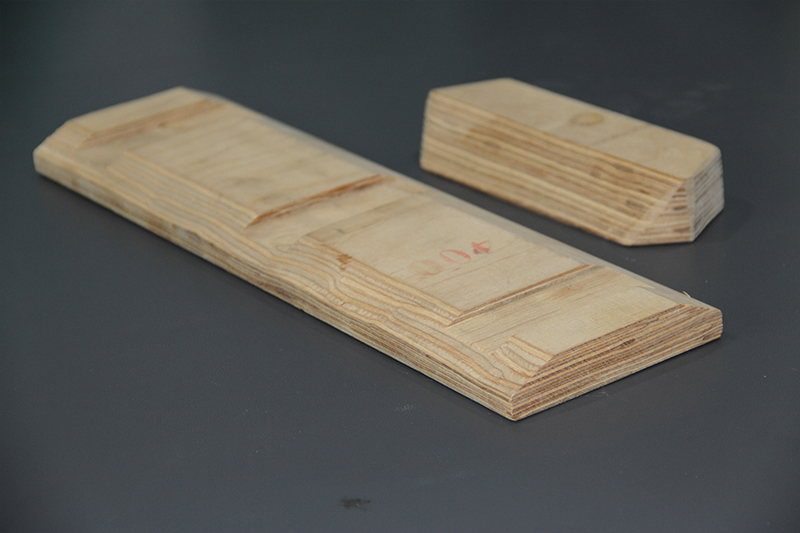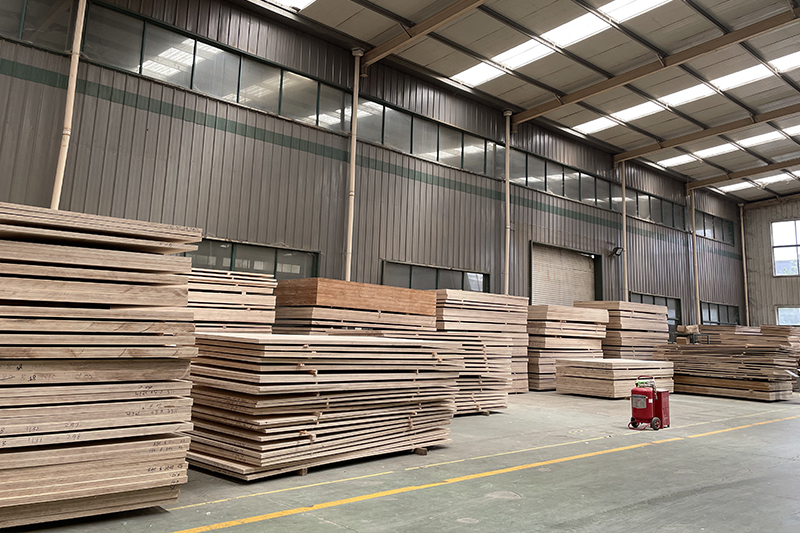Electrical laminated wood is a composite material made by fusing birch veneers with phenolic resin and adhesive under high temperature and high pressure. It is widely used in the fields of electrical equipment, insulating components, and mechanical support structures.
The specific specifications of laminated wood are as follows:
Regular thickness: 10 – 100mm
Regular size: 1000×2000/1500×3000mm
Insulation class: Class A (105° C)
Regular density: 1.1 – 1.2g/cm³
Color: The original color of wood
| NO. | Properties | Unit | Index | ||||
| DLW101 | DLW201 | DLW202 | DLW301 | ||||
| 1 | Appearance | – | Smooth Surface, Neat Edge Cutting, No Layered Cross-section | ||||
| 2 | Density | g/cm³ | 1.2-1.3 | 1.1-1.2 | 1.1-1.2 | 1.0-1.1 | |
| 3 | Vertical Bending Strength | A Direction | MPa | ≥80 | ≥65 | ≥65 | ≥55 |
| B Direction | ≥80 | ≥65 | ≥65 | ≥55 | |||
| 4 | Impact Strength | A Direction | KJ/m2 | ≥15 | ≥13 | ≥13 | ≥10 |
| B Direction | ≥15 | ≥13 | ≥13 | ≥10 | |||
| 5 | Interlaminar
Shear Strength |
MPa | ≥9 | ≥8 | ≥8 | ≥7 | |
| 6 | Vertical Electrical Strength
(90℃ transformer oil) |
Kv/mm | ≥9 | ≥8 | ≥7 | ≥7 | |
| 7 | Parallel Breakdown Voltage
(90℃ transformer oil) |
kv | ≥50 | ≥50 | ≥50 | ≥50 | |
| 8 | Contamination to Liquid Dielectric | – | ≤0.1 | ||||
| 9 | Shrinkage after Drying | A Direction | % | ≤0.3 | ≤0.3 | ≤0.3 | ≤0.3 |
| B Direction | ≤0.3 | ≤0.3 | ≤0.3 | ≤0.3 | |||
| Thickness Direction | ≤3 | ≤3 | ≤3 | ≤3 | |||
| 10 | Water Content | % | ≤6 | ≤6 | ≤6 | ≤6 | |
| 11 | Oil Absorption | % | ≥5 | ≥8 | ≥8 | ≥10 | |
| Application Scope of Laminated Wood Insulating | Transformer | ≤110KV | ≥110KV | 66-35KV | ≥ 35KV | ||
For high-voltage equipment such as transformers and switchgear, laminated wood must offer excellent insulation, high-temperature resistance, and aging resistance.
Material Selection Guidelines:
Prioritize epoxy resin-based laminated wood, which features outstanding dielectric strength and superior heat resistance (can withstand temperatures above 130°C for extended periods).
Base material should preferably be hardwoods such as birch or maple, which offer high mechanical strength, making them ideal for load-bearing parts like transformer spacers.
In humid environments, use sealed resin systems with low water absorption to prevent moisture-induced degradation of insulation performance.

In equipment such as distribution boxes and circuit breakers, the laminated wood should emphasize cost-efficiency, ease of machining, and basic insulation performance.
Material Selection Guidelines:
Phenolic resin-based laminated wood is cost-effective and meets general insulation requirements (operating temperature ≤ 105°C).
Softwoods like pine can be used as base material to reduce costs while ensuring sufficient structural strength.
For equipment subject to frequent vibration, such as industrial circuit breakers, consider glass fiber-reinforced laminated wood to enhance impact resistance.
Wind power converters, photovoltaic inverters, and other new energy equipment require electrical laminated wood with properties such as weather resistance, vibration resistance, and lightweight design.
Material Selection Guidelines:
For outdoor environments, prioritize UV-stable resins (such as modified epoxy resin), which can effectively resist ultraviolet radiation and prevent material aging.
Wind power equipment demands high fatigue resistance; cross-laminated structures are recommended to reduce the risk of cracking caused by vibration.
In weight-sensitive scenarios such as rooftop PV systems, low-density basswood substrates can be used to achieve lightweight design while maintaining strength.

In the rail transit sector—such as pantographs on high-speed trains and control cabinets in subways—electrical components must be flame-retardant, arc-resistant, and long-lasting.
Material Selection Guidelines:
Materials must comply with flame-retardant standards such as EN 45545, and UL94 V-0 rated laminated wood should be the preferred choice.
For environments with frequent arc exposure, such as pantographs, arc-resistant modified resins (e.g., those filled with Al₂O₃) should be selected.
For insulating supports that bear long-term mechanical loads, high-density hardwood combined with epoxy resin is recommended to ensure long-term durability.
Equipment used in special environments like nuclear power plants or marine vessels must exhibit radiation resistance, corrosion resistance, and adaptability to extreme temperatures.
Material Selection Guidelines:
For nuclear power applications, radiation-resistant formulations (e.g., specially cross-linked resins) should be used to prevent material degradation in radioactive environments.
In marine environments, laminated wood with anti-salt spray coatings or sealed epoxy resin is required to prevent moisture and salt infiltration that leads to corrosion.
For ultra-high-temperature applications such as motor slot wedges, consider base laminated wood modified with polyimide resin, which can withstand temperatures exceeding 180°C.
Thanks to its unique material properties, electrical laminated wood plays an indispensable role in various types of power equipment. Due to differences in working environments and core requirements, each application demands different material properties. From the stringent standards of high insulation and high temperature resistance for high-voltage equipment, to the pursuit of weather resistance and lightweight for new energy equipment, to the special considerations of radiation resistance and corrosion resistance for special environment equipment, each choice is directly related to the operational safety and service life of the equipment. Therefore, in actual applications, it is necessary to combine the characteristics of specific equipment, accurately grasp the core needs, and strictly follow the key points of material selection in order to allow electrical laminated wood to give full play to its performance advantages and provide a solid guarantee for the stable and efficient operation of the power system.
If you need our products please write down any questions, we will reply as soon as possible.
There are three ISO certificates for quality certification. The certificates will be shown later. ISO
After receiving the advance payment, the production cycle is 15-25 days. And the transportation cycle should be calcul……
We supply with installation guide and user manual for each transformer. If you do not understand them. We will offer v……